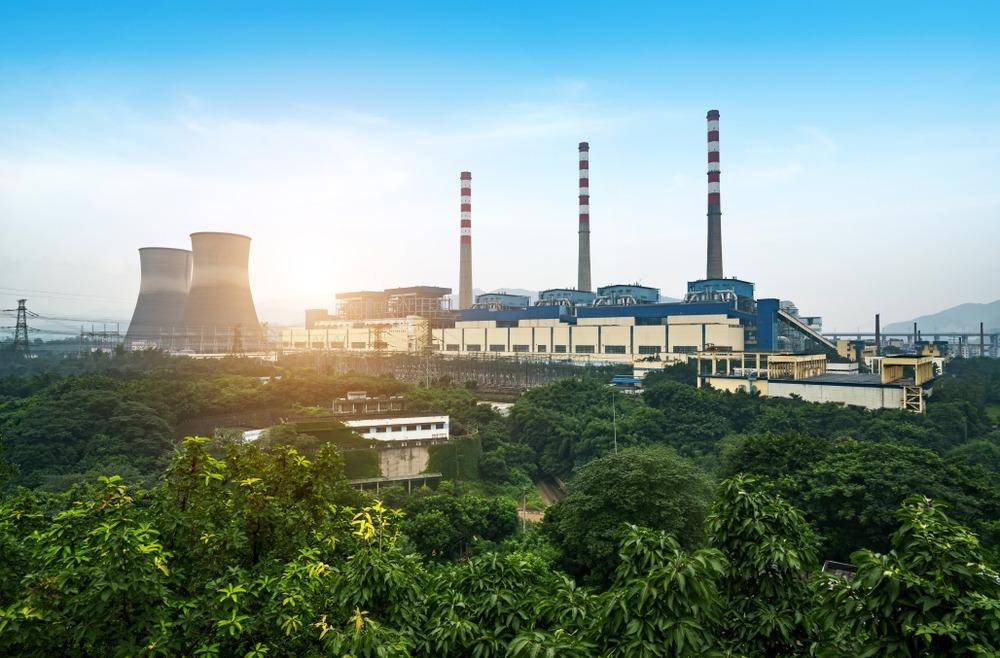In recent decades China has continually expanded as one of the leading industrial nations on the global stage which has led to increased power generation demand. However, this rapid expansion and dependence on coal-fired power has resulted in increased levels of air pollution within China as well as impacting neighboring countries such as Japan and South Korea.

Study: Total Factor Energy Efficiency of China’s Thermal Power Industry. Image Credit: QinJin/Shutterstock.com
Now, researchers in China and Taiwan have recently applied super-efficiency DDF models to evaluate the energy efficiency of thermal power industry in 30 provinces and cities in China. The team also used the Total Factor Energy Efficiency (TFEE) method to analyze the efficiency of each factor in order to evaluate what action is required in the near future.
With economic growth rapidly rising in China, a large number of coal-fired power plants were constructed in recent years to cope with power shortages. The research, published in the journal Sustainability, states that if CO2 emissions are to be reduced then the expansion of thermal power generation cannot be considered any further.
As it stands, almost 75% of China’s new power generation capacity stems from thermal power generation with coal-fired power being the most prominent. This has led to a decrease in air quality as air pollution problems worsen in Chinese provinces and cities. As a result, China has made various commitments such as 2013’s ‘Coal Control Plan’ and direct involvement in the 2015 Paris Agreement to tackle climate change.
Tackling Air Pollution
Since 2016, the ambition of China’s green goals and government policies is to move away from coal-fired power generation to renewable energy sources, however, three quarters of electricity demand still relies on the coal industry. As the move towards renewable energy is taking place, much of this is still in the early developmental stages and cannot meet the huge energy demands in China.
Although coal consumption in China is reducing, many problems, such as power supply instability, unemployment problem of the workers, coal prices and costs, and thermal power generation efficiency, are all a tug-of-war on environmental protection and economic levels
Ching-Cheng Lu, corresponding author and assistant professor at the Department of Economics at Soochow University, Taiwan
The objective of the study is to provide a reference for local governments and/or power industry managers to help accomplish greater energy efficiencies in thermal power generation while also paving a way to further reduce carbon emissions.
The study applied both super-efficiency DDF and TFEE models to provide a set of measurement standards for the power industry across Chinese provinces so as to improve the efficiency and development of energy industry in China. “Through proper adjustment of TFEE model, factors that affect energy efficiency can be found to improve air pollution and promote sustainable economic and environmental development,” states Lu.
Tackling air pollution directly and applying the super-efficiency DDF and TFEE models under VRS could offer the Chinese government the tools necessary to selecting and employing the most appropriate energy methods to reduce the waste of resources and reallocate resource distribution.
Environmental Change
While the study determined that energy efficiency was high in certain areas, the distribution was uneven in terms of energy conservation and emissions reduction potential. Therefore, balancing these factors out could allow local and central government to diversify the energy structure by adjusting energy consumption in advance: “Improving the efficiency of thermal power generation is of far-reaching significance for environmental protection, economies of scale, and green and sustainable development of China,” says Lu.
China currently plays a central role on the global stage when it comes to climate action and environmental change as it looks towards new green initiatives and changing its thermal power generation and resource allocation. Therefore, it is of vital importance that central and local governments work together to implement new strategies to promote green energy solutions and reach energy efficiency goals.
Applying the models proposed in the study could help China achieve its climate objectives and reduce air pollution and also benefit its neighbors such as Japan and South Korea by improving air quality. The higher energy efficiency achieved by the improvement of energy technology can allow China to implement the most suitable resource allocation strategy.
Environmental change on this scale is not a straightforward as it seems but with the collective effort of central and local government and power industry managers and factoring in the regional differences in the field of thermal power generation when formulating policies could enhance the power efficiency and advance the green development of the renewable power industry in China.
References
Feng, Y.; Lu, C.-C.; Lin, I.-F.; Yang, A.-C.; Lin, P.-C. Total Factor Energy Efficiency of China’s Thermal Power Industry. Sustainability 2022, 14, 504. https://www.mdpi.com/2071-1050/14/1/504
Disclaimer: The views expressed here are those of the author expressed in their private capacity and do not necessarily represent the views of AZoM.com Limited T/A AZoNetwork the owner and operator of this website. This disclaimer forms part of the Terms and conditions of use of this website.